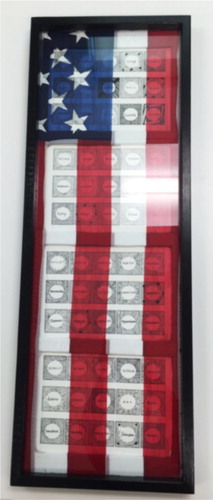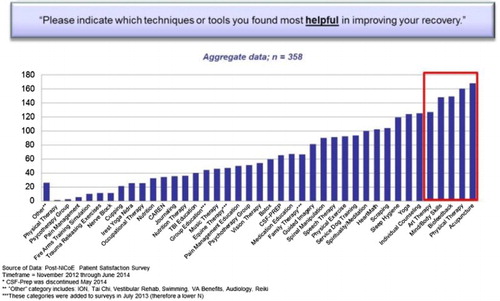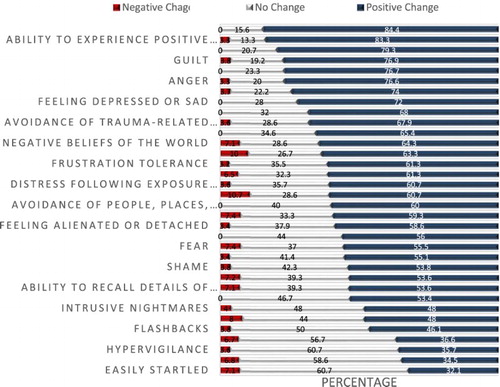Figures & data
Figure 1. Mask base and a completed mask. Each service member is given a blank papier-mâché mask (left) and asked to transform the template to represent whatever he/she would like regarding their identity. A sailor chose to represent the different facets of himself (right), depicting the face he shows the outer world in contrast with the dual parts of his inner personality, including a bright, peaceful side and a dark, tumultuous side.
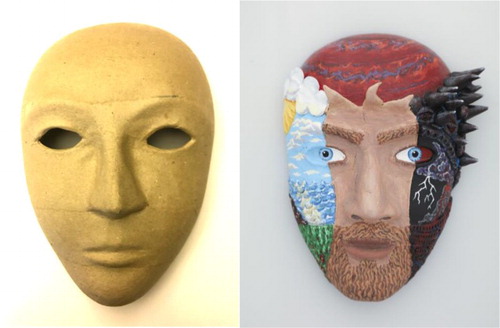
Figure 2. Montage painting. Each service member is given a blank 20.32 cm × 25.4 cm canvas and invited to layer art media to represent a theme, often resulting in the depiction of past/present/future, and what the service member feels has changed (or what they learned) during treatment. In this montage painting, a sailor chose to integrate a box that has ruptured under the pressure of keeping things (negative words, feelings, images, dreams, and phrases) inside. The work also features a meandering green arrow leading from the NICoE logo with positive words of healing along its path.
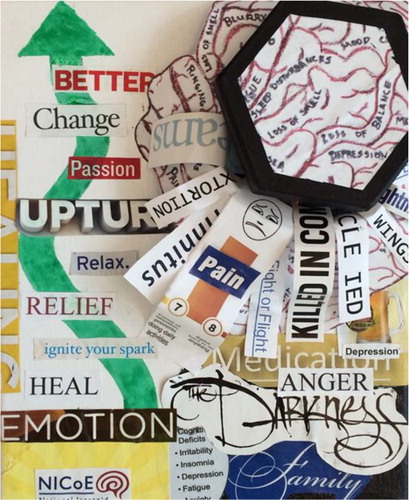
Figure 4. Collage representing greatest fear and greatest comfort. A soldier created two collages, one to represent her greatest fear at the moment and one to represent her greatest comfort at the moment. Her comfort collage represents herself, ‘little tiger’, as she is currently working to find herself and take care of her own needs. Additional comforts depicted in the collage are the importance of family, home as sanctuary, and enjoying nature. Her fear image is represented by a turbulent storm which alludes to her work, feeling as if she’s drowning because of the constant painful experiences that make up her work, telling her case’s stories but not getting a chance to tell her own (until now), feeling no peace, taking harsh words personally. Her image was created with vertical lines, representing how she feels caged in, jailed. In sharing the images she spoke of taking the opportunity to tell her story now as it is important for her to survive her last couple of years of her military career.
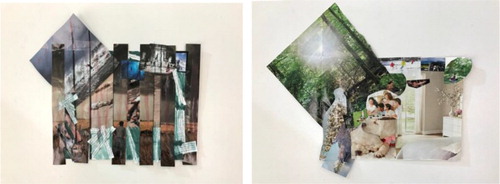
Figure 5. Depicting the soul. A soldier created these drawings, the first a depiction of his soul, and the second a depiction of what his soul needed to be nourished to a state of greater wellbeing. His soul depiction shows a soul ‘being attacked’ by internal and external elements, with a wall of anger as defence against the elements. There is a wall being broken down with ‘greener grass’ on the other side. His nourishment image shows a distorted clock, which represents his realisation that even when engaged in multiple therapies, profound change, and ultimately the healing of the soul, ‘takes time’.
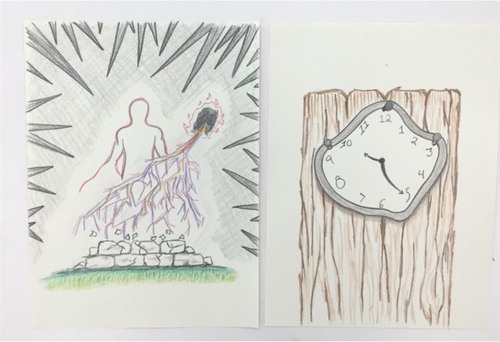
Figure 6. Celebration/commemoration box. A marine created this box, collaging personal photographs around the outside walls to show how on the outside ‘everything looks pretty’ – he looks good, whole, smiling with friends and family. The inside of the box shows how internally he feels fractured by memories that are burned into his soul, some of which is represented by photographs of comrades who have died collaged onto the inside walls. The patch glued to the inside of the box lid is upside down and torn apart to show feeling in distress. The centre of the box contains a volcano with Pandora’s box to show a hole into Hell he personally experiences.

Figure 7. Celebration/commemoration box. A marine created this celebration/commemoration box, on the outside walls of which he rendered intricate emblems that represent the chronology of jobs he has had which have shaped him throughout his career, the experiences, positive and negative, that make him who he is today. Within the box he carefully created a scene that is comprised of elements that represent his four significant ‘close calls’ from combat.

Figure 8. Level 3 open studio artwork. A soldier drew this image (in progress) of a road with a hole that shows fragments of multiple combat experiences, his efforts to emerge from the hole, to travel down the road with holes that become smaller as the road moves forward to a more hopeful area in the distance.
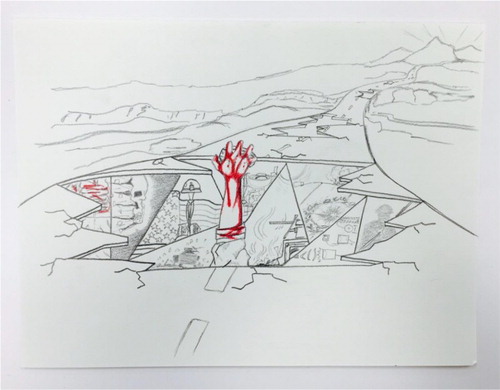
Figure 9. Assemblage made in individual sessions. A soldier created this assemblage entitled ‘The Evidence of True Faith and Allegiance’ which provides a glimpse of what can be seen on the floor of any forward medical station. The artwork depicts the essence of the oath soldiers take, and following through with the oath to whatever trauma may occur or whatever end may come.
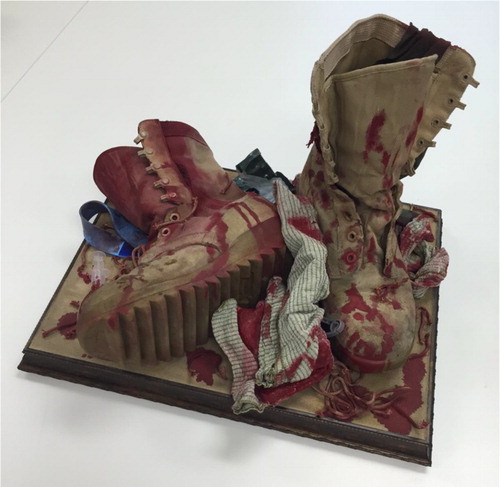
Figure 10. Mixed media artwork. A marine created this mixed media battlefield cross sculpture to memorialise a best friend and comrade who was killed in action. Creating the memorial allowed him to feel he paid his respects.

Figure 11. Tile collage artwork. A marine created this mixed media artwork to work through complicated grief of over 60 comrades he knew who were killed in action or died since returning home (Note: This photo has been blurred to protect the confidentiality of the fallen). The creation of the memorial tiles allowed him to process the death and reflect on the life of each individual, and the matting and framing of the tiles with the American flag motif, seeming as if a flag is draped over a casket, allowed him to move from focusing on the traumatic nature of the deaths to honourably laying each person to rest. His artwork evolved to capture ‘honour’ and he was able to release negative pent up energy as result of the process.
